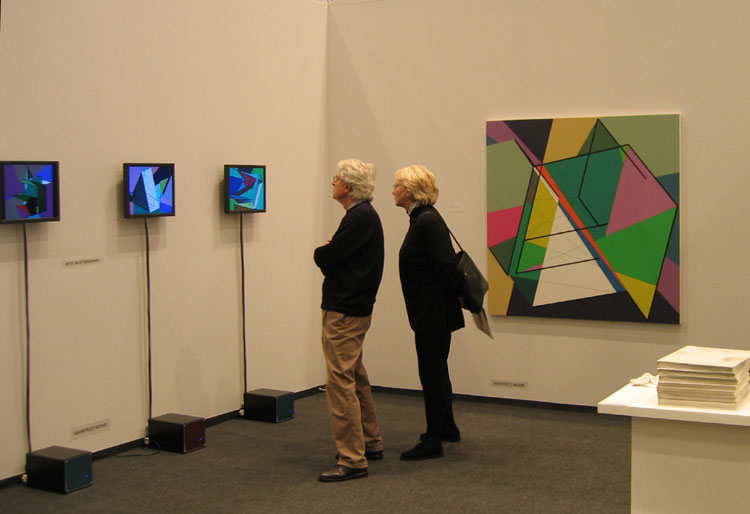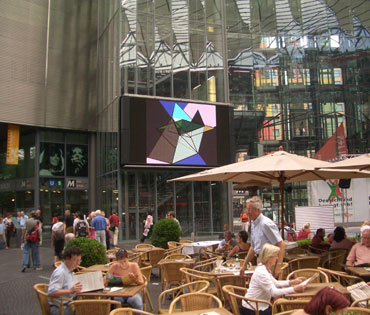Manfred Mohr’s “space.color.motion” initially written in 1999 is an example of computational art that uses simple design elements like lines, color fill, and eventually, animation, to convey a sense of dimensionality that is both convincing and transcendent of reality– “unimaginable constellations,” to quote Mohr. The 6-d hypercube and its angles and increments are based on the present time and date but are otherwise randomly generated with every restart of the program, creating animations that are unique with every passing frame. Although these aspects are randomly generated, there is a system of diagonals that are diametrically opposite of each other, as well as one determining the thickness of lines and how it constructs planar quadrilaterals– these are controlled by the established algorithm, systematizing randomness to create an intentional and mesmerizing work of art.
The many applications of this project demonstrate an aspect of computational art that traditional art is unable to achieve. Because of its randomly generated nature, many stills of the animation can be captured and made into collections of artwork. Mohr also exhibited this project in various galleries and public spaces in the form of animation and paintings, inspiring a myriad of different experiences with one computer program.


![[OLD FALL 2020] 15-104 • Introduction to Computing for Creative Practice](wp-content/uploads/2021/09/stop-banner.png)